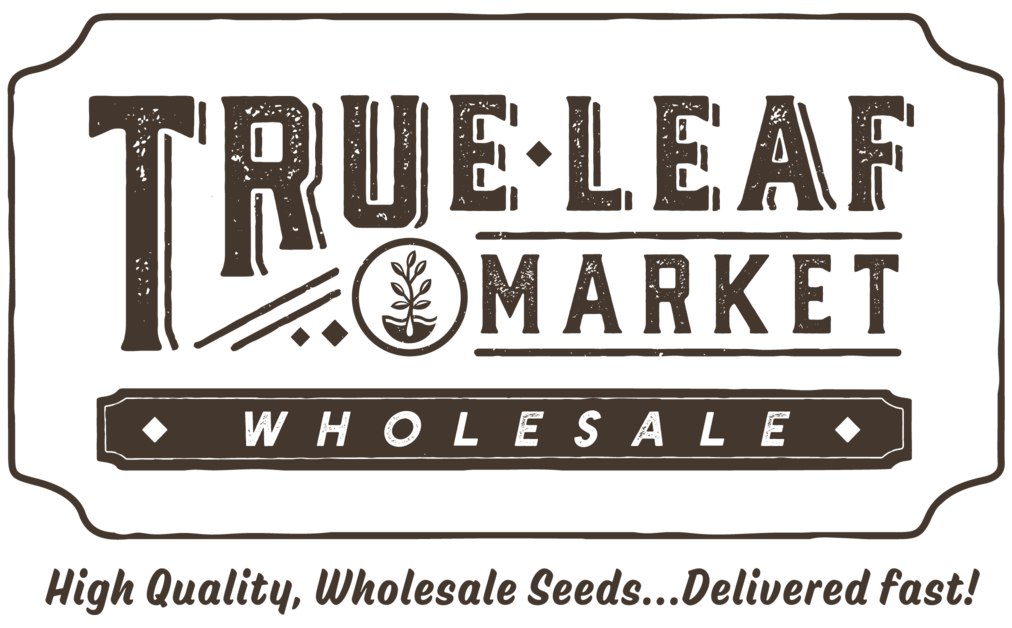Growing Non-GMO Italian Large Leaf Basil Herb Garden Seeds
How to Grow Italian Large Leaf Basil Herb from Seed
Basil is a warm-weather crop grown both indoors and out. For earliest starts, begin indoors 6-8 weeks prior to final frost. Plant 4-6 seeds .25" deep per cell or 3-4" apart in the garden in moderately moist, well-drained soil in full sun. Germinates in 5-10 days, thinning back to 1-2 plants per pot or every 9-12" in the garden as true leaves establish. Harden off seedlings if transplanting outside. Harvest, prune, and pinch regularly to encourage growth.
Non-GMO Basil Italian Large Leaf seeds are an easy herb to grow. It thrives either in the traditional outdoor gardens and urban gardens or indoor planting containers and hanging baskets. Allow the herb to receive lots of sunlight and warm air. The lemony-sweet scent of basil is unattractive to aphids, mites, and hornworms, keeping them away from your other herbs and plants.
Keep soil moist but not saturated as basil is susceptible to overwatering, mildew, and mold.
Italian Large Leaf Basil in the Herb Garden
Large leaf is Genovese-type basil that grows 18 to 24 inches high and 2' wide. Giant shiny green leaves are full of heady aroma that just make your mouth water. This is a favorite of many gardeners because when cooking you need only a few leaves to add that distinctively yummy flavor to your dish. For the same reason, it makes loads of basil pesto with just a few plants.
Basil plants are popularly grown indoors just as readily as they are planted outdoors in containers, planters, and the garden bed. Most varieties of basil are native to the reliably wet, humid tropics of southeast Asia and Africa and still require the same consistently moist conditions for a flavorful and booming harvest.
A member of the mint family, culinary basil grows, habits, and looks very similar to garden mint. Yet unlike mint, the basil plant has more diverse varieties in color and flavor such as Cinnamon, Lemon, Licorice, and Spicy. Native to much of Asia, basil thrives in many temperate climates with regular moisture and no extremes in heat or cold.
Harvesting Italian Large Leaf Basil Herb
Pruning the plants before they set flowers will keep the plant producing fresh leaves throughout the season. Prune about once a month. A shot of liquid nitrogen fertilizer, at pruning time, if your soil is not particularly fertile, will help the plants recover. Eat basil often and dry or freeze leaves throughout the summer. Make your final harvest before the first frost of fall, as the plant will not survive the cold.
Vigorous, tall-growing, large-leaved basil is a must in any pesto. Can grow up to 2' tall with leaves 1-2" wide. During the summer when we have a surplus of basil we will make our pesto, freeze it in ice cube trays and then remove them to store in a freezer container. This is a perfect way to get pesto even during the dreariest days of winter.
About Italian Large Leaf Basil Herb Seeds
Recommended by the Following State Universities or Ag Extension Offices as a variety that performs well for their region. AL, GA, KY, LA, MS, NC, SC, TN
Basil can be easy to grow and preserve for later use. It even has companion plantings. Learn how to use it in many delicious recipes.
TIP With any basil, to keep the leaves coming pinch back the blooms to create a more bushy plant loaded with leaves. You will notice when you pinch one flowering bud, two branches will come back in its place. My grandmother taught me to do this with tomatoes to keep them from getting leggy and to increase branches. More branches more tomatoes!
For drying or freezing, harvest leaves that have their maximum oil content just before they flower. To dry, cut whole stems on a dry morning, tie stems loosely together in small bunches, and hang to dry in an airy location. If you are going to freeze it, you may do so on a cookie sheet and then seal them in a zip lock bag. You can also mince it and freeze it in an ice cube tray with water or oil. To harvest, pinch the stem just above a set of leaves as needed from the top this will help to keep the plants bushy. Make sure you don't harvest too much at a time as this can weaken the plant. The flowers of the Basil Italian Large Leaf are also edible and are used sometimes as a garnish.




